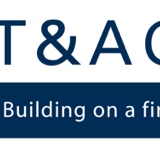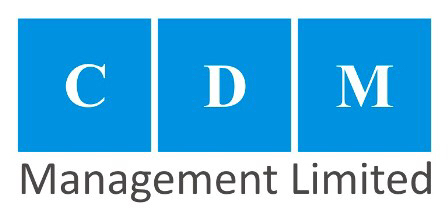Information
-
Document No.
-
Audit Title
-
Client / Site
-
Conducted on
-
Prepared by
-
Location
-
Personnel
Part 1: Sources of ignition
-
Are there procedures in place to control any smoking materials, e.g. Cigarettes, matches or lighters?
-
Are there procedures in place to monitor any cooking processes?
-
Are there procedures in place to monitor the use of any electrical, gas or oil fired heaters in the assessment area?
-
Are there procedures in place to control the use of any portable lighting equipment?
-
Are there procedures in place to report any faulty electrical or misused electrical equipment?
-
Are there procedures in place to control the use of extension leads or multi plug adapters being used within the assessment area?
-
Has all portable electrical equipment been PAT tested?
-
Are there procedures in place to monitor any hot surfaces, or any obstructions of ventilation equipment?
-
Is all electrical wiring in good condition and regularly inspected by a competent person?
-
Are all light bulbs / shades and fittings clear of combustible materials?
-
Are all electrical sockets, plugs, appliances, and adapters in good condition?
-
Is there any lightening protection systems in place (usually roof top conductor)?
-
Are there procedures in place to minimise to a minimum any risks from Arson, and that a fire may be started by patients or clients, either accidentally or deliberately?
-
Are there procedures in place to monitor and record any history or evidence of Arson?
-
Are there procedures in place to monitor and record any previous history of fire loss within the building?
Part 2: Sources of fuel
-
Are all sources and potential sources of fuel stored correctly?
-
If there are any wood or wood-based furniture, textiles and, or soft furnishings within the assessment area, are they stored correctly?
-
If there are any waste products particularly finely divided items such as shredded paper, wood shavings, or off cuts and dust within the assessment area, are they stored and disposed of correctly?
-
Are all textiles and furnishings to the correct standard?
-
If there are any flammable products e.g. cleaning and decorating products, petrol, white spirit, methylated spirit, alcohol, cooking oils or disposable lighters within the assessment area, are they stored correctly?
-
Is there an up to date COSHH register within the assessment area?
-
If there any flammable liquids stored in plastic containers are they stored correctly within the assessment area?
-
If there are present, any flammable gases e.g. Liquified petroleum gas (LPG) including aerosol canisters within they assessment area, are they stored correctly?
-
Are all storage areas controlled and monitored according to their risk? Are all store doors either shut or locked shut depending on their use?
-
Is all office paperwork tidy and stored properly?
-
Are all means of escape routes free from obstructions and storage of combustible materials?
-
Are all wheeled waste bins stored in designated areas away from any buildings? Are contractors skips controlled and placed in appropriate areas away from the sides of any buildings fitted with openable windows?
Part 3: Sources of Oxygen
-
Are there any sources of Oxygen stored on the premises (either by the company or other tenants)?
Part 4: Persons at risk
-
If there any employees who work alone, either regularly or at specific times and/or in isolated areas; if yes is there a lone worker policy in place?
-
Are all people who are unfamiliar with the premises, e.g. agency or temporary staff, guests, visitiors (including visiting medical or social care staff) contractors in the assessment area, made aware of the fire safety procedures for the area.
-
Are there procedures in place in regards the evacuation of any people who are not able to leave the premises quickly (but do not require assistance), e.g. visitors who are elderly or with limited disabilities?
-
Are there procedures in place in regards the evacuation of people with language difficulties in building?
-
Has the maximum and minimum number of staff been considered within the building?
-
Has the maximum and minimum number of staff on duty been considered within the building?
-
Has the maximum and minimum number of any disabled staff been considered within the building?
-
Has the maximum and minimum number of visitors been assessed within the building?
Part 5 Fire Protection Measures
-
Has the total travel distance to the nearest emergency exit been considered within the building?
-
Has any travel distances in excess of 60 metres been considered within the building?
Part 6: Escape Routes & Strategies
-
Have you considered the type, number and dependency of people using the premises, when determining whether your premises have adequate means of escape?
-
Have you considered assisted means of escape, when determining whether your premises have adequate means of escape?
-
Are desks and chairs stored correctly and not on escape routes?
Part 7: Emergency Evacuation of Persons with Mobility Impairment
-
Is there provision for the emergency evacuation of disabled persons via:- Horizontal Evacuation, Refuges; Rails; Evacuation Lifts, and other suitable Evacuation Aids?
Part 8: Signs and Notices
-
Are there instructions on how to use any first aid fire fighting equipment such as: fire extinguishers, hose reels, fire blankets?
-
Have provisions been made for staff or visitors with impaired vision?
-
Are all fire escape signs correctly positioned?
-
Does all escape signage have a pictograph on them?
-
Are designated fire doors indicated with appropriate signs ie, "Fire Door Keep Shut"
-
Are designated fire doors fitted with appropriate signage indicating how to use the door mechanism ie, "Push Bar To Open"?
-
Where necessary have "Fire Exit" doors got "Fire Exit Keep Clear " signs fitted?
-
Are all red Break Glass Call Points identified with appropriate signage?
-
Is there an "Action In case of Fire" notice beside each red Break Glass Call Point within the building?
-
Does all "Action in case ofFire" notices have appropriate assembly points suitable for personnel?
Part 9: Lightning
-
Is the building large enough to require lightning protection?
-
If lightning protection is required, does it meet the requirements of BS6651: 1992?
-
If fitted are lightning protection systems visually inspected every 12 months?
Part 10: Access for Fire Engines and Fire Fighters
-
Are all access roads to the building hard standing areas for fire engines and access roads into the building for fire-fighters, kept free from obstructions?
Part 11: Fire-fighting Equipment
-
Is all fire-fighting equipment in the correct position and in satisfactory and serviceable condition? Are they within 12 month service date?
-
Are all fire extinguishers positioned on escape routes?
-
Are the extinguishers suitable, sufficient and well sited?
-
Are the extinguishers visible or does their position need indicating?
-
Are fire blankets provided where required ie in kitchens or beverage bays where cooking equipment such as ovens, cookers, microwave ovens, toasters etc are situated?
-
Has the use of any automatic fire extinguishing or suppressant systems been considered within the assessment area?
Part 12: Means of Escape - Single Direction of Escape
-
Is the premises provided with such a means of escape in case of fire, and such a means for securing that the means of escape can be safely and effectively used at all material times, as may be reasonably required in the circumstances of the case? (Minimum escape widths of 800mm from offices)
-
Has an evacuation strategy been provided?
-
Are there sufficient fire exits for the occupancy of the building?
-
Is the maximum distance for a single direction no more than 18m in staff areas, before there is a choice of escape routes?
-
Is the maximum distance for escape no more than 15m (can include escape from an inner room providing access room is not a fire hazard room)?
Part 13: Means of Escape - Travel Distance
-
Is an emergency plan for the premises, stating the preferred methods of evacuation prepared, in order to assess the suitability of circulation spaces?
-
All Premises: Are doors on the escape route side-hung or pivoted?
-
All Premises: are all doors non-obstructive of escape corridor widths?
-
All Premises: if any doors to cupboards are located along corridors on the escape route, do such doors open through 180 degrees to avoid obstruction?
-
Will the structural elements resist the spread of heat and smoke for at least 30 minutes?
-
Is the escape route clearly defined?
-
Is the route installed with anti-slip surface?
-
Are adequate handrails provided?
-
Is escape lighting provided for the route?
Part 14: Means of Escape - Refuge
-
Have any areas within the building been identified for safe refuge?
Part 15: Means of Escape - Escape Lighting
-
Is escape lighting installed?
-
Is escape lighting provided to cover the following areas? Each exit door, intersections in corridors, outside each final exit and external escape routes, emergency escape signs , stairways so that flight receives adequate light, changes in floor levels, windowless rooms and toilet accommodation exceeding 8m2, fire fighting equipment, fire alarm call points, equipment that would need to be shut down in an emergency, lifts, areas greater than 60m2?
-
Is primary lighting provided to all internal and external escape routes?
-
Large Premises: is escape lighting provided within the following spaces: External routes to a place of safety?
Part 16: Fire Alarm Automatic Detection
-
Is there an automatic fire detection system installed?
-
Is there automatic detection installed in all areas?
-
If fitted is the fire alarm "Conventional"?
-
If fitted is the fire alarm "Addressable"?
-
If fitted is the fire alarm "a life protection system"?
-
If fitted is fire alarm "a property protection system"?
-
Is fire alarm linked to an "Alarm Receiving Centre"?
-
Are there break glass call points provided at each final exit, storey exit, nurse station?
-
Can the fire alarm be clearly heard throughout the building?
-
Is the fire alarm visual and audible?
-
Is the fire alarm tested weekly within the assessment area?
-
Are records kept in regards all testing and maintenance of the fire alarm system?
Part 17: Fire Training
-
Do all staff receive fire safety training during a staff induction programme prior to commencing work within their ward or department?
-
Do all staff receive mandatory fire safety training annually, or sooner if a risk assessment identifies a higher risk of fire?
-
Have you trained your staff in using the means of escape, fire warning system and fire routine procedures?
-
Are there records of all fire training drills, tests and examinations carried out?
-
Are fire drills carried out? Date of last evacuation drill?
-
Is there a system in place for logging staff in and out of the building?
-
Have you considered all the people likely to be present in your work place and others that may share the building with you?
-
Is there a system in place for recording visitors and guests present in the assessment area?
-
Are there procedures in place to account for all persons in the assessment area should evacuation be necessary?
Part 18: Control of Visitors & Contractors
-
Are there arrangements in place to control the works carried out by contractors or visitors?
-
Are there arrangements in place for the safe storage of any hazardous materials brought on site by contractors or visitors?
-
Do contractors and visitors receive H&S and Fire Safety instructions either on site or prior to commencing work on site?
Part 19: Recommendations / Action Plan
-
Place all recommendations within this section and label either urgent or non - urgent.
Part 20: Overall Risk Rating
-
Risk Rating:
Part 21: Review Date
-
Date of review:
Part 22: Signature of Auditor
-
Auditor to Sign Here:












